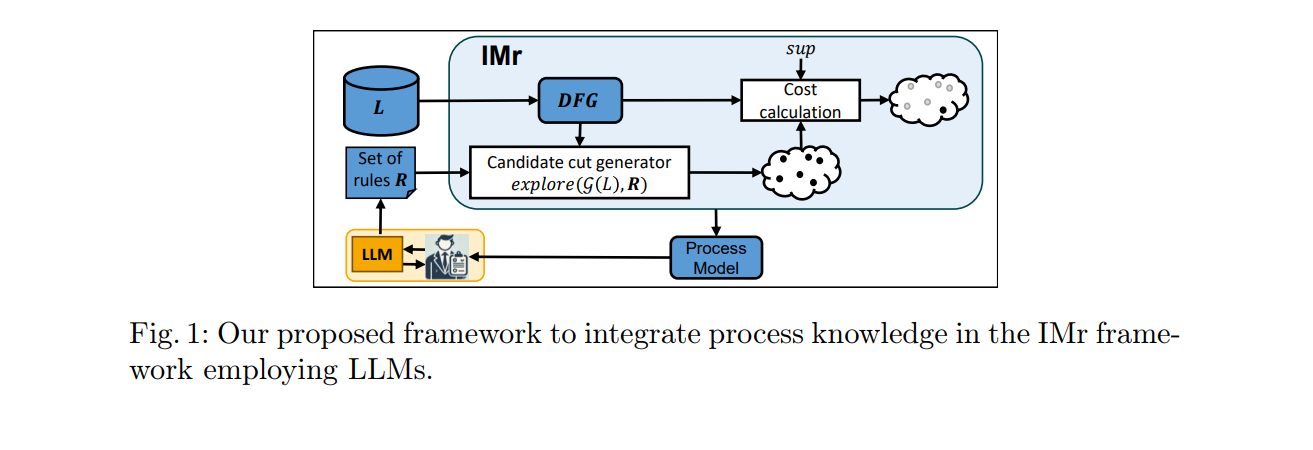Aachen, Germany – Researchers from RWTH University, Fraunhofer FIT, and the UWV Employee Insurance Agency have developed an innovative approach to process discovery using Large Language Models (LLMs).
This groundbreaking framework, detailed in their recent paper titled "Bridging Domain Knowledge and Process Discovery Using Large Language Models," promises to enhance the accuracy of process models by directly integrating valuable domain knowledge.
Bridging the Knowledge Gap
Traditional automated process discovery techniques have long struggled to incorporate insights from domain experts and detailed process documentation. This often results in process models that don't fully align with actual business practices, making it challenging to use these models for conformance checking and process improvements.
The new framework addresses this issue by employing LLMs to translate domain knowledge, typically expressed in natural language, into declarative rules. These rules then guide the creation of process models that are more faithful to real-world operations.
How It Works
The framework leverages the power of LLMs to convert feedback from domain experts and process descriptions into actionable rules that fit into the Inductive Mining (IMr) process. According to the researchers, this system can either use pre-existing textual descriptions or engage in interactive sessions with experts to refine the process models continuously.
This dual approach ensures that the resulting models incorporate a wealth of practical knowledge and adapt dynamically to new insights.
Case Study: Real-World Application at UWV
The effectiveness of this framework was demonstrated in a case study with the UWV employee insurance agency, responsible for handling unemployment and disability benefits in the Netherlands.
By applying the framework to UWV's claim-handling processes, the researchers were able to generate process models that closely matched the normative model developed by domain experts. This contrasted sharply with models created using traditional methods, which failed to capture several critical aspects of the actual processes.
Implications for the Future
The introduction of LLMs into process discovery represents a significant leap forward in the field. By bridging the gap between automated data analysis and expert human knowledge, this framework opens new possibilities for industries that depend on complex process management. "Our framework not only facilitates the integration of feedback from domain experts but also enables interactive improvement of process models," the authors state, underscoring the transformative potential of their approach.
A New Direction in Process Mining
This research places a spotlight on the potential for AI-driven frameworks to revolutionize how organizations understand and optimize their operations. Moving forward, the team plans to expand the framework's capabilities by including a wider variety of declarative templates and refining the way LLMs interpret and apply expert feedback. This advancement not only enhances the precision of process models but also paves the way for more adaptive and responsive business process management systems.
As this technology evolves, it may soon become a standard tool for industries looking to streamline their operations and enhance process compliance. The ability to continuously refine process models based on real-time feedback and domain expertise could lead to more efficient, accurate, and adaptable business operations across various sectors.



Cool!
[…] Large Language Models (LLMs) have traditionally struggled with understanding visual data because they were designed primarily for text processing. To address this, Visual Language Models (VLMs) were developed to merge visual and textual information. […]
[…] 70B has quickly made headlines as the most powerful open-source LLM available today. The model was trained using Reflection-Tuning technology, a cutting-edge technique […]
[…] (Multi-Agent Iteration for Coarse-to-Fine Refinement), aimed at enhancing reasoning capabilities in Large Language Models (LLMs) like GPT-3.5 and Llama-3-8B. Their solution directly addresses significant challenges faced by LLMs […]
[…] representing ICs and their subsequent states as flattened 1D arrays. This approach, akin to how transformer models process language data, enabled LifeGPT to predict future game states without being restricted by spatial […]
[…] is constantly evolving, especially with large language models (LLMs) that are changing many fields. A recent research paper called "Automating Thought of Search: A […]
[…] attracted significant investor interest. However, the company is clear about its selective use of large language models (LLMs). Instead of relying on LLMs to generate fact-checking results, Infactory employs them to interpret […]